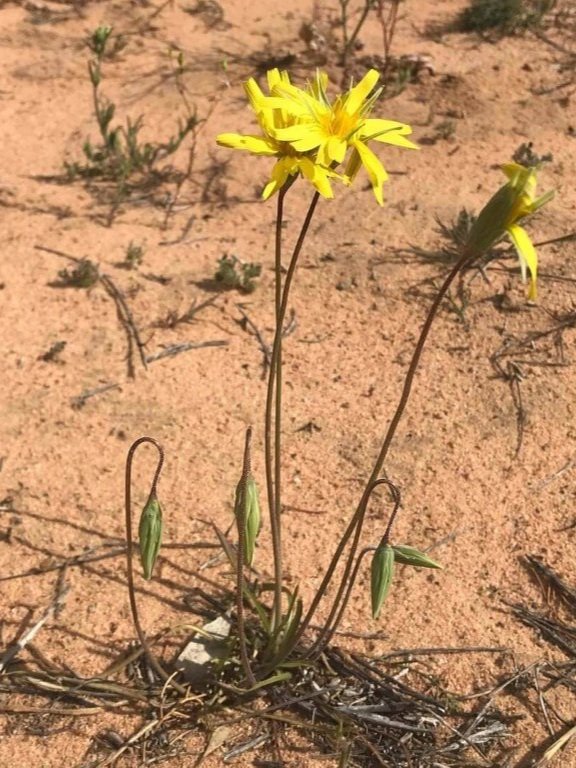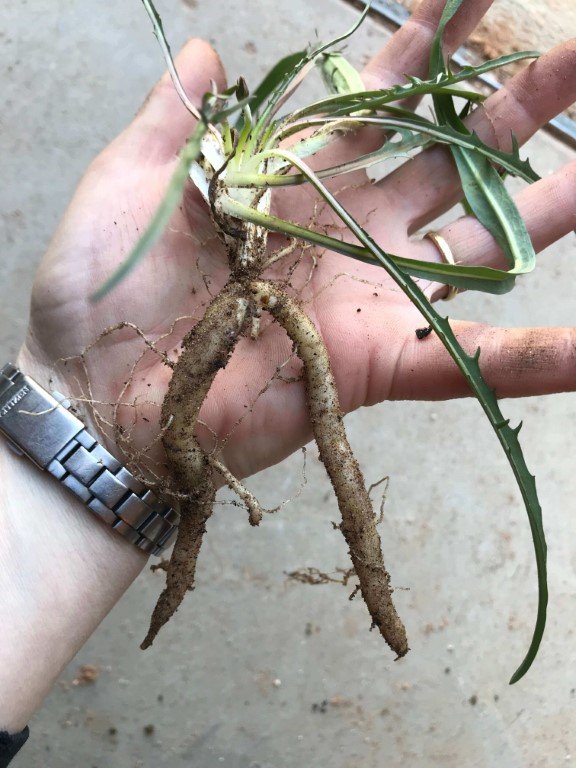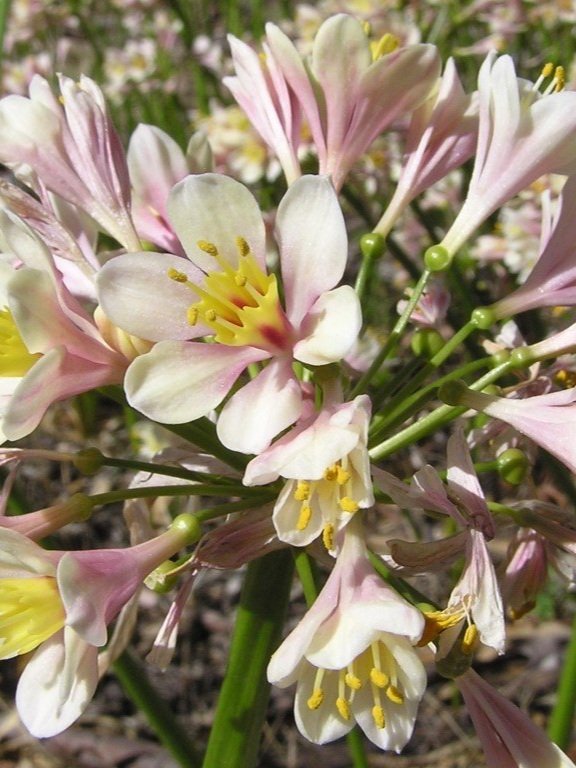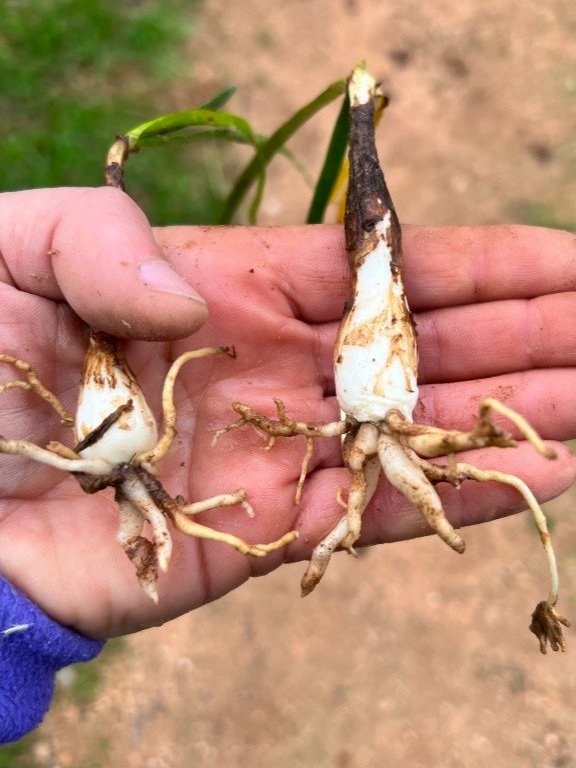Tubers, rhizomes and bulbs
What lies beneath the Murnong, Fringe Lily and Garland Lily?
You don't often see the root systems of plants out in the bush. But there are tubers, rhizomes and bulbs, particularly in semi-arid areas. These store water, nutrients and energy that allow the plants to resprout after fire, drought, or a summer dormant period.
Murnong or Yam Daisy (Microseris walteri) in flower. I’ve written a bit more about Murnong (Yam Daisy) here
Murnong or Yam Daisy (Microseris walteri) tubers. Family: Asteraceae
Underground storage organs are also a nutritious source of carbohydrates in First Nations diets. Some are tastier than others and have been farmed and harvested for thousands of years in many parts of the world. Methods like replanting, soil disturbance and burning promote the growth of favoured plants, creating and maintaining long-term "resource hotspots". Traditional knowledge includes mixing certain bulbs with termite earth to make them tastier (er, really?)
Postscript: Yes, really. My good friend Cinclosoma alerted me to the importance of human consumption of termitaria soil for both nutrition and to treat gastric disorders. For example, termitaria are used to quell an upset stomach after eating too many yams, probably because of the greater clay (kaolin) content than adjacent top soil. Termite soil is also used during pregnancy or lactation because of elevated nutritional elements such as iron and calcium (1).
Mallee Fringe Lily (Thysanotus baueri) in flower
Mallee Fringe Lily (Thysanotus baueri) tubers. Family: Asparagaceae
I was surprised at just how many plants. Noongar people in southwestern Australia harvested around 400 plant taxa from 25 plant families! The underground storage organs here are from three different families: Murnong (Family Asteraceae - the daisies), Fringe Lily (Family Asparagacea - yep looks like asparagus roots) and Garland Lily (Family Amaryllidaceae - flowering bulbs like the Amaryllis).
Garland Lily (Calostemma purpureum) in flower
Garland Lily (Calostemma luteum) bulb. Family: Amaryllidaceae
First Nations' interactions with underground storage organs in southwestern Australia, a Mediterranean climate Global Biodiversity Hotspot (2) provides a detailed worldwide overview. It also speaks of the disastrous effects of the historical separation of knowledge from custodians. The authors explore how a revival of traditional plant knowledge and skills, is critical to foster connection and cultural identity to restore people and Country. (BTW, yes).
Here’s the concluding paragraph:
Based on our review findings, we suggest several critical elements for successful and respectful exploration of traditional plant knowledge to inform biodiversity conservation. These are
(1) Elder leadership,
(2) inclusion of individuals with good plant identification skills, potentially through taking vouchered herbarium specimens, and
(3) consideration of traditional gender-based roles.
Transmission of plant knowledge held by contemporary knowledge holders is most accurate through shared experience on Country, enabling both correct taxon identification and for traditional and scientific knowledge holders to jointly explore their collective understanding of a plant’s conservation requirements (e.g. disturbance response, phenology or population genetics relating to human use), thus maximising its value for information relating to biodiversity conservation strategy. Imperative in any documentation of this process is a clear link to individual knowledge holders and the knowledge that they share. This approach avoids separation of First Nations knowledge from First Nation families, the rightful holders of such knowledge, and, if required, encourages intergenerational ‘waking up’ of knowledge inextricably linked to cultural identity for current and future First Nations people. Given that Noongar USO harvest is primarily a female domain, appropriate gender-based protocol is also imperative to prevent cultural harm and maximise knowledge accuracy. We suggest that inclusion of each of these elements can set us on a path to more meaningful, inclusive conservation approaches into the future.
References
Foti, F. (1994) The possible nutritional / medical value of some termite mounds used by aboriginal communities of the Nauiyu Nambiyu (Daly River) and Elliot of the Northern Territory, with emphasis on mineral elements. M.Sc. thesis, University of Queensland.
Lullfitz et al. (2022) First Nations' interactions with underground storage organs in southwestern Australia, a Mediterranean climate Global Biodiversity Hotspot Plant and Soil. 476: 589-625






